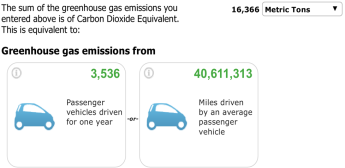Virtual 50th Anniversary of Earth Day
By Deborah Robin Croft
GSA’s Northeastern and Caribbean Region participated in the first-ever virtual anniversary celebration of Earth Day on April 22, 2020. Over 110 viewers tuned in on their smartphones, tablets and computers to learn about how GSA saves taxpayers hundreds of thousands of dollars in energy costs in our Federal buildings each year.
By all accounts, GSA’s Virtual Earth Day event was successful. “I am very pleased the event was so well attended and am grateful to the speakers who were willing to participate in an activity while most of our employees are working from home during this pandemic,” said PBS Region 2 Regional Energy Coordinator Brian K. Magden.
One of Region 2’s four presenters was Nuenergen’s CEO, Kevin Hamilton, who talked about the practice of Demand Response as a means to reduce energy costs while earning revenue.
Through NuEnergen’s Demand Response program, GSA - in partnership with ConEdison and other utility companies - receives payments for being on standby to lower its electric usage when the power grid is experiencing high demand. The sixteen Federal facilities in New York State and New Jersey that PBS enrolled in the Demand Response program in 2019 earned GSA $274,000 in rebates. GSA Region 2 has earned more than $3 million since 2011 through the program. Participating in Demand Response enables GSA to protect the reliability of the grid, preventing the possibility of power losses and lowering the cost of electricity when demand is highest.
“Our successful Demand Response program in the Region causes no discomfort to our tenants, requires no capital investment, earns GSA energy rebates, saves taxpayer dollars, and reduces carbon emissions while protecting the reliability of the power grids,” says Magden. “This program is an excellent example of good environmental, operational and budget stewardship.”
Following NuEnergen, John Harvey, the public sector procurement officer for EnelX presented. EnelX has worked with GSA since 2001, when New York State and New Jersey deregulated their gas and electric markets. Utility deregulation enables end users such as GSA to buy its electricity and natural gas from third party energy suppliers rather than from the local utility.
Since FY 2001, PBS Region 2 has facilitated the award of 104 electricity contracts to third party energy suppliers with a value of $787 million. Additionally, the Region facilitated the award of 72 natural gas contracts worth more than $132 million to suppliers. These accomplishments have led to electricity cost avoidance of $49 million and natural gas cost avoidance of $7 million, resulting in a total cost avoidance for GSA and its client agencies of $56 million through third-party energy contracts. By purchasing 93.5 million kilowatt hours (kWhs), PBS Region 2 has significantly exceeded Federal mandates, with one-third of its energy coming from renewable energy sources.
Scott Lewin, regional contracting operations leader for the Trane Company in New Jersey, is another energy partner with GSA. Trane implements the U.S. Department of Energy and GSA’s Region 2 Savings Performance Contract locally, with 98 energy conservation measures, resulting in the following annual savings and environmental benefit:
Natural Gas and Steam Reduction
Electric Consumption Reduction
The ongoing partnership between GSA and Trane is what makes the savings and reductions sustainable.
Lastly, Region 2’s Virtual Earth Day also highlighted a presentation from Eduard Rodriguez, the executive director for another GSA partner, Big Shine Energy, whose mission statement is to make a difference for future generations by helping to reduce Carbon Dioxide emissions through LED lighting and solar services.
An example of a successful project the company performed for GSA is the Champlain Land Port of Entry LED Lighting Project in upstate New York. The total project cost was $385,342, which included replacing 579 High-Pressure Sodium Lights with 579 LED fixtures. The new lighting is anticipated to have a lifespan up to 50,000 hours; whereas the old High-Pressure Sodium Lighting has a lifespan only up to 12,000 hours. This project is expected to save the Region’s Land Port of Entry 1,168,000 kWhs a year, and reduce the facility’s annual electric costs by $68,000. GSA will earn a rebate check for $100,000 from New York State Electric and Gas as a result of installing 579 LED lighting fixtures. That money will fund nearly one-third of the cost of the project.
GSA Region 2’s Virtual Earth Day was a great success and again shows how GSA has led the way during this pandemic for federal agencies when it comes to excellence in leveraging teleworking optimally throughout our Region.

 U.S. General Services Administration
U.S. General Services Administration
